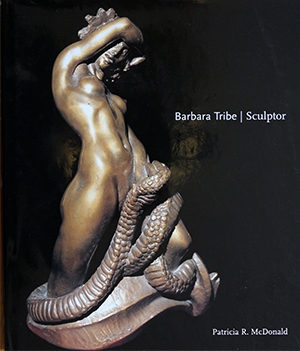Arts
Andrew Sayers has one large and important idea that distinguishes his account of Australian art from all others: the story must include equal attention to Aboriginal art and to the art of white European settlement. However commanding and commendatory the idea, it will not, I suspect, be a popular one.
... (read more)Robert Holden reviews 'Barbara Tribe: Sculptor' by Patricia R. McDonald
We should no longer marvel at the way art historians are forever finding yet another woman artist to rescue from undeserved obscurity. With Patricia R. McDonald’s tribute to Barbara Tribe we have the work of this eclectic Australian sculptor finally validated in a handsomely produced monograph.
... (read more)David Carter reviews 'Australian National Cinema' by Tom O’Regan
In a course on Australian popular culture, I routinely ask students a pair of questions: is Australian culture increasingly Americanised; is Australian culture increasingly distinctive and original? They routinely answer yes to both. Australian National Cinema suggests why there might be more than poor logic behind their response. Its contradictoriness tells us something fundamental about how Australian cinema exists in the cinema world and the social world.
... (read more)Ours is not a visually literate culture – architects and designers are not the household names they are in countries such as Spain, nor is design understood or appreciated to any discernible degree – so it is always a particular pleasure when a publication appears that celebrates design. However, it is therefore also doubly important that such a publication should enliven or enlighten a public already so impervious to what design has to offer.
... (read more)The Australian Bicentennial Arts Program has been documented in a collection of review articles recently published by Mead and Beckett. It is a record not only of the wide range of arts activities throughout the year but also of some of the issues which confronted the artists involved.
No, it is not an Aborigine on the front of the Australian Bicentennial Authority’s 1988 Reviews (edited by Sarah Overton). It is Mamadou Dioume as Bhima in Brook’s Mahabharata. And don’t be misled by the Aboriginal colours in a contemporary-primitive motif that hovers in the foreground about the title. The essential problem is, evidently, to appear respectable while affirming a vanquished culture (is there a preferable word?) within an imperial medium.
... (read more)Jim Davidson reviews 'Tom Roberts 1856–1931: A catalogue raisonné' by Helen Topliss
When Scholars wandered across our television screens recently, palettes in hand, many were offended by the anachronisms: busts taking artists off to Sydney, or feminist polemics leading out to a car-clogged St Kilda Road. One Summer Again was an impression of Australia’s impressionists, and had the honesty to make that plain; and the more one reads about Roberts, Streeton, and Conder, the more it becomes clear that, in addition to communicating the raw energy and exuberance, the miniseries got the essentials absolutely right. Tom Roberts was as Chris Hallam, himself a onetime Englishman and art student, depicted him: confident, given to making pronouncements, a touch humourless perhaps, but a man with a high sense of purpose who easily moved among all kinds of people at all social levels.
... (read more)Leigh Astbury reviews 'Images In Opposition: Australian landscape painting 1801–1890' by Tim Bonyhady
Influence spotting is one of the major preoccupations of traditional art history. Important and necessary though the practice may be, I sometimes suspect that it is employed to keep art history the preserve of the specialist and to deny access to the general reader. How refreshing, then, to be confronted with a scholarly Australian art history book that explores the artists’ subject matter and its local context rather than the derivation of the artists’ styles.
... (read more)Sometimes I feel like quitting the whole scene. There’s so much hype and petty politicking. But that goes on in your own backyard. So there I am again – up there on stage, with Mike, wearing my Greek sailor’s cap, and my heart having stopped thumping now, because I’m reading what I really (may I be anachronistic?) dig, and am serious about – POETRY! I mean Gene Wilder really works hard at being a comedian, and me at my funny poems. ‘Well’ I might say ‘this is an angry poem, because I’m one of those angry middle-aged men’, or ‘this is called “Poem-Ugly” because a lot of what I write is ugly. I try to strip the veneer from my everyday matter mundane existence, the extraneous matter in my grey brain; to rarefy to an essence the human condition, and all I’ve got left is my bare existential soul, and my poem – but maybe that’s not too bad!’
... (read more)Carmel Oakley reviews 'Arthur Streeton: The art without the man' by Arline Usden
The best things about this book are the paintings, the photographs, and the paper. The worst thing is the prose. But does this matter, you may well ask, in a book obviously designed to travel rapidly from the coffee table to the wall – with its large size format and convenient disintegration at first read? It’s the pictures we want, not the prose.
... (read more)T. Counihan reviews 'The Black Swan of Trespass' by Humphrey McQueen
Humphrey McQueen’s new book claims to give an adequate account of the emergence if not the development of modernist paining in Australia up to 1944. In particular he claims to do two things the previous writers in this area have not done or have done inadequately.
... (read more)







